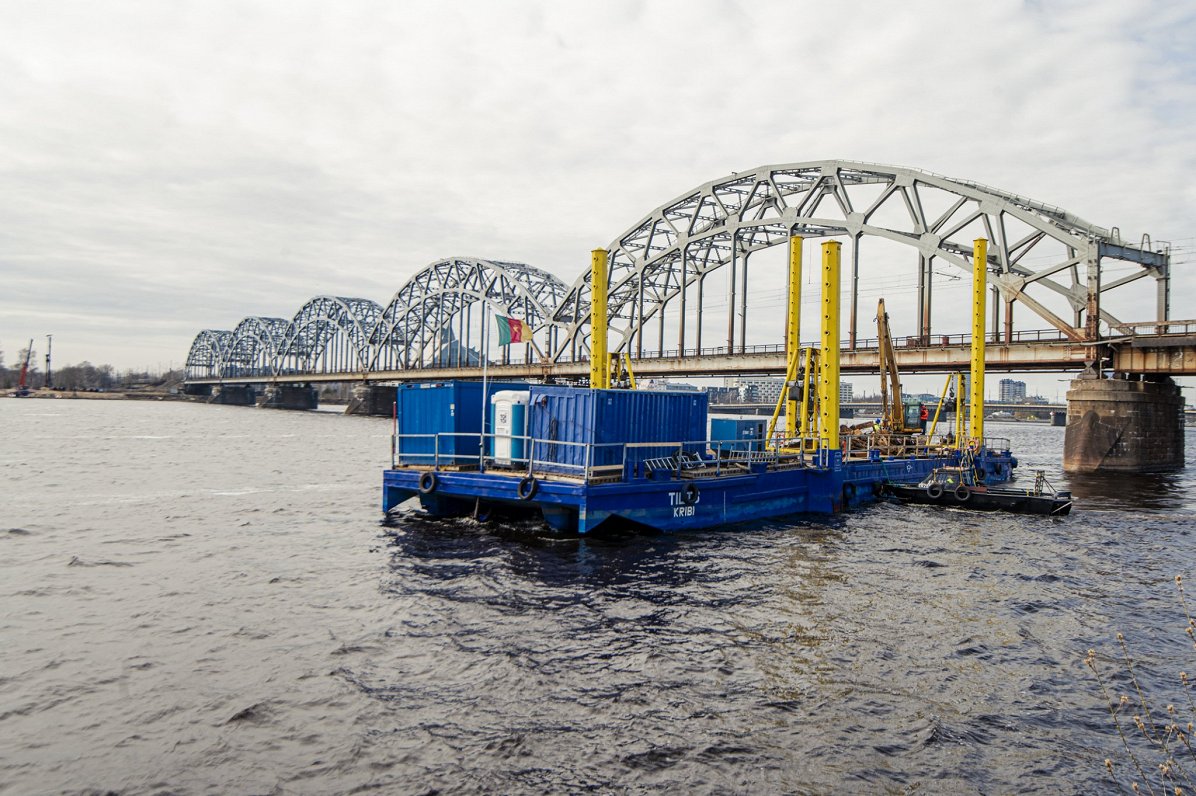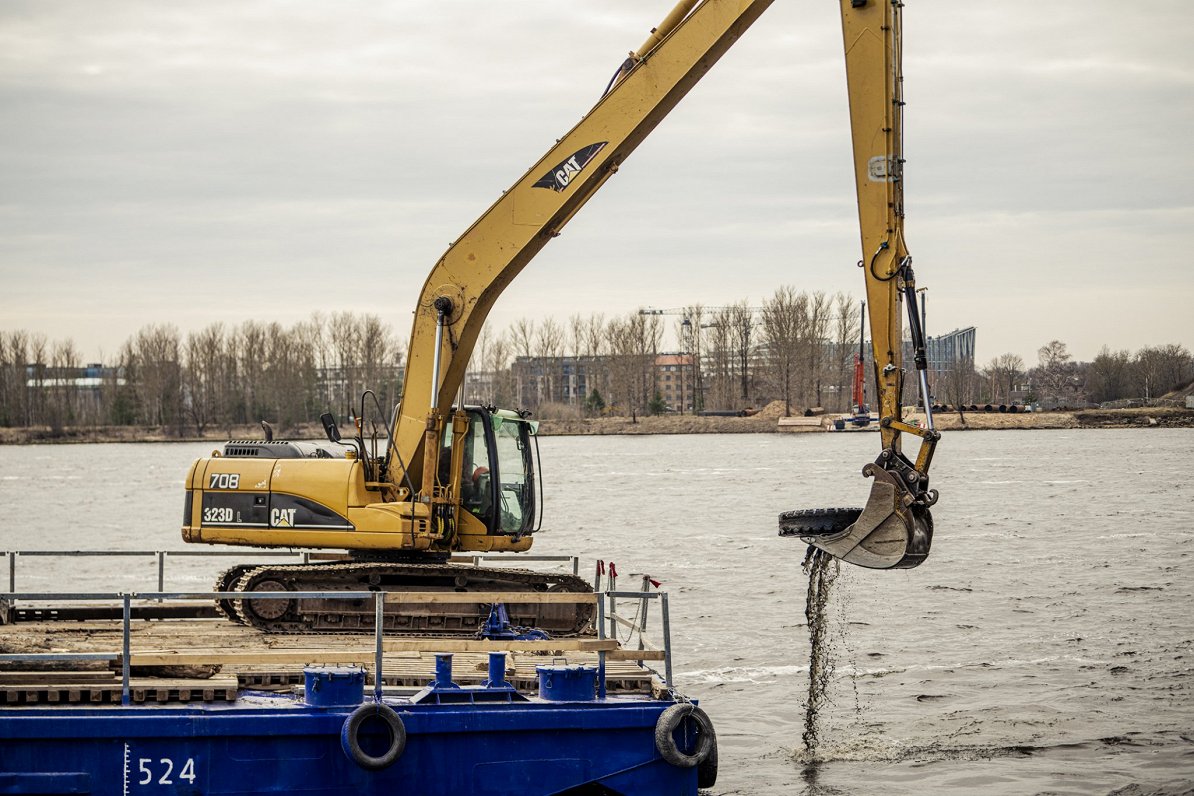Bottom cleaning work in the bridge support area began in mid-March. Daugava still has structures of a temporary bridge built after the war, as well as various other sunken elements.
The first pillar of the bridge in the Daugava will be built from a barge - the builder will construct rectangular-shaped groove wall structures at the same time as pile drilling, which will reach the dolomite layer. A solid slab will then be built between the slotted walls on the riverbed to prevent water pressure on the concrete lattice.
The next step will be to create a dry environment in the support construction space. Water will be pumped out using special equipment and water pumps. After its construction, construction of the support itself will also be commenced. Overall, these works are planned to be carried out by the beginning of autumn.
The distance between the new and existing railway bridge will be between 5 and 10 meters.
Rail Baltica railway bridge over the Daugava will be about one kilometer long with two European standard track gauges (1435 mm).
The bridge is also designed to accommodate pedestrian and cyclist movements with several approaches.
The new bridge will begin at Lastādija Street, pass across the Daugava, Zaķusala, Mazā Daugava, and end at Mūkusalas Street. On a European scale, the bridge is quite unique because, following the technical solutions of the railway load and project, the height of the span structure is relatively small to its length, the builders noted.











































